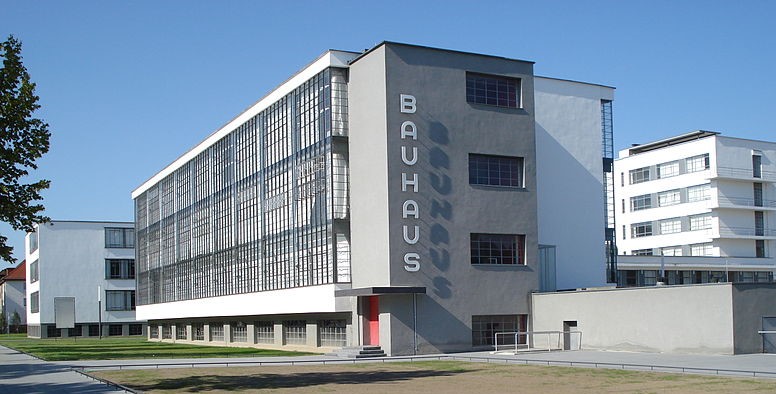New European Bauhaus
Contents |
[edit] Introduction
In October 2020, the European Commission published a Renovation Wave Strategy for improving the energy performance of buildings. The purpose of the Strategy is to double renovation rates (at the very least) by 2030 in the EU and make sure renovations lead to higher energy and resource efficiency.
One aspect of the strategy is the establishment of a New European Bauhaus, an interdisciplinary project managed by a panel of external experts including scientists, architects, designers, artists, planners and other representatives of civil society. The hope is that this New European Bauhaus will combine building performance with inventiveness to produce liveable, sustainable, affordable environments that are accessible to all.
[edit] Good design to improve quality of life
The New European Bauhaus takes its name from the Bauhaus design school founded by Walter Gropius in 1919. It is part of the NextGenerationEU investment and recovery plan proposed as part of the EU’s response to the 2020 COVID-19 pandemic.
The New European Bauhaus movement is intended to be a bridge between the world of science and technology and the world of art and culture. It will combine good design with sustainability by bringing it closer to people's minds and homes, making green design comfortable and attractive.
The New European Bauhaus will be:
- A forum for discussion.
- An experimentation lab.
- An accelerator for new solutions.
- A hub for global networks and experts.
- A meeting place for citizens interested in the topic.
[edit] Introduction of the New European Bauhaus
This approach will be introduced in three stages.
- A design phase. This stage will draw on the expertise and engagement of design, science and business professionals who will explore ideas and shape the movement.
- A delivery phase. This stage will begin with five New European Bauhaus projects in different EU Member States. Each project will be adapted to local resources and will integrate digital innovation.
- A sharing phase. The final stage will focus on spreading the ideas and reaching out beyond Europe's borders.
[edit] Guiding Europe and beyond
German politician Ursula Von der Leyen, who became president of the European Union's executive branch in December 2019, introduced the New European Bauhaus as a method for changing how the world treats nature. In her remarks made during the introduction of the concept, she said, "Our current levels of consumption of raw materials, energy, water, food and land use are not sustainable.” However, she added, "This is not just an environmental or economic project: it needs to be a new cultural project for Europe. Every movement has its own look and feel. And we need to give our systemic change its own distinct aesthetic – to match style with sustainability."
Von der Layen highlighted construction as an area that needs to be made more sustainable, with buildings in the EU currently generating 40% of its emissions. She also urged the construction industry to make better use of timber as a building material while proposing using artificial intelligence to incorporate additional sustainability features into buildings.
Additional goals suggested by Von der Leyen include investments in projects with the biggest impact for a green future, such as hydrogen energy, renovation and one million electric charging points. She also set a goal of reducing greenhouse emissions by 55% by 2030.
[edit] Related articles on Designing Buildings Wiki
Featured articles and news
RTPI leader to become new CIOB Chief Executive Officer
Dr Victoria Hills MRTPI, FICE to take over after Caroline Gumble’s departure.
Social and affordable housing, a long term plan for delivery
The “Delivering a Decade of Renewal for Social and Affordable Housing” strategy sets out future path.
A change to adoptive architecture
Effects of global weather warming on architectural detailing, material choice and human interaction.
The proposed publicly owned and backed subsidiary of Homes England, to facilitate new homes.
How big is the problem and what can we do to mitigate the effects?
Overheating guidance and tools for building designers
A number of cool guides to help with the heat.
The UK's Modern Industrial Strategy: A 10 year plan
Previous consultation criticism, current key elements and general support with some persisting reservations.
Building Safety Regulator reforms
New roles, new staff and a new fast track service pave the way for a single construction regulator.
Architectural Technologist CPDs and Communications
CIAT CPD… and how you can do it!
Cooling centres and cool spaces
Managing extreme heat in cities by directing the public to places for heat stress relief and water sources.
Winter gardens: A brief history and warm variations
Extending the season with glass in different forms and terms.
Restoring Great Yarmouth's Winter Gardens
Transforming one of the least sustainable constructions imaginable.
Construction Skills Mission Board launch sector drive
Newly formed government and industry collaboration set strategy for recruiting an additional 100,000 construction workers a year.
New Architects Code comes into effect in September 2025
ARB Architects Code of Conduct and Practice available with ongoing consultation regarding guidance.
Welsh Skills Body (Medr) launches ambitious plan
The new skills body brings together funding and regulation of tertiary education and research for the devolved nation.
Paul Gandy FCIOB announced as next CIOB President
Former Tilbury Douglas CEO takes helm.
UK Infrastructure: A 10 Year Strategy. In brief with reactions
With the National Infrastructure and Service Transformation Authority (NISTA).























